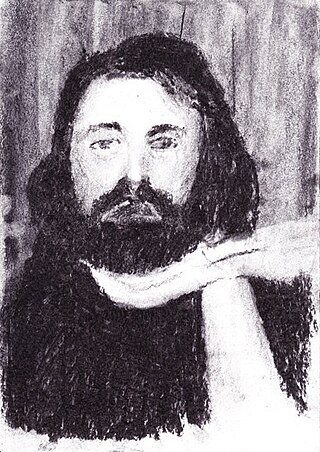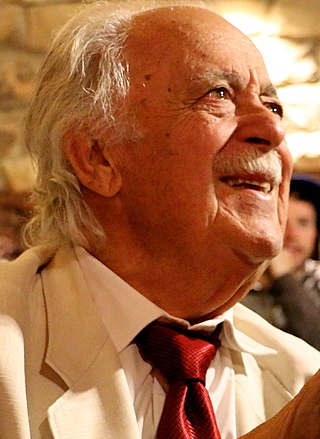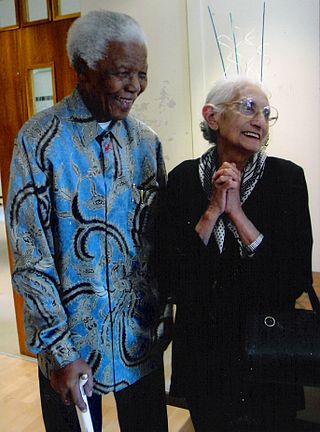
Winnie Madikizela-Mandela, also known as Winnie Mandela, was a South African anti-apartheid activist and politician, and the second wife of Nelson Mandela. She served as a Member of Parliament from 1994 to 2003, and from 2009 until her death, and was a deputy minister of arts and culture from 1994 to 1996. A member of the African National Congress (ANC) political party, she served on the ANC's National Executive Committee and headed its Women's League. Madikizela-Mandela was known to her supporters as the "Mother of the Nation".

Balthazar Johannes "B. J." Vorster was a South African apartheid politician who served as the prime minister of South Africa from 1966 to 1978 and the fourth state president of South Africa from 1978 to 1979. Known as B. J. Vorster during much of his career, he came to prefer the anglicized name John in the 1970s.

Helen Suzman, OMSG, DBE was a South African anti-apartheid activist and politician. She represented a series of liberal and centre-left opposition parties during her 36-year tenure in the whites-only, National Party-controlled House of Assembly of South Africa at the height of apartheid.

Neil Aggett was a Kenyan and South African doctor and trade union organiser who was killed, while in detention, by the Security Branch of the Apartheid South African Police Service after being held for 70 days without trial.

George Bizos was a Greek-South African human rights lawyer who campaigned against apartheid in South Africa. He was noted for representing Nelson Mandela during the Rivonia Trial. He instructed Mandela to add the qualification "if needs be" to his trial address, which is credited with sparing him from a sentence of death. Bizos also represented the families of anti-apartheid activists killed by the government, throughout the hearings of the Truth and Reconciliation Commission.
The African Resistance Movement (ARM) was a militant anti-apartheid resistance movement, which operated in South Africa during the early and mid-1960s. It was founded in 1960, as the National Committee of Liberation (NCL), by members of South Africa's Liberal Party, which advocated the dismantling of apartheid and gradually transforming South Africa into a free multiracial society. It was renamed "African Resistance Movement" in 1964.
Zephania Lekoame Mothopeng was a South African political activist and member of the Pan-Africanist Congress (PAC).
Carl Niehaus is the former spokesman for South African ruling party the African National Congress, former spokesman for Nelson Mandela, and was a political prisoner after being convicted of treason against South Africa's former government. He stepped down as ANC spokesman in February 2009 after admitting to maladministration of his own finances, extensive borrowing from political contacts and fraud, notably feigning the death of his mother, Magrietha Niehaus‚ in order to get out of 4.3 million rand debt owed to a landlord. He is a vocal supporter of former President Jacob Zuma. On 12th December 2022 Niehaus was expelled from the ANC. In 2023 he set up his own party - the African Radical Economic Transformation Alliance - and then abandoned it to join the Economic Freedom Fighters (EFF) at the end of 2023.
Phakamile Mabija was an African anti-Apartheid activist who died while in police custody in 1977.
Zwelakhe Sisulu was a South African black journalist, editor, and newspaper founder. He was president of the Writers' Association of South Africa, which later became the Black Media Workers Association of South Africa, and he led a year-long strike in 1980 for fair wages for black journalists. Under apartheid, he was imprisoned at least three times for his journalism. After apartheid ended, he became the chief executive officer of the South African Broadcast Corporation.

Amina Desai was South Africa's longest serving female Indian political prisoner.
Mapetla Mohapi was a member of the Black Consciousness Movement, who died in detention during Apartheid in 1976.

Ahmed Timol was an anti-apartheid activist in the underground South African Communist Party. He died at the age of 29 from injuries sustained when he fell from the top floor of John Vorster Square police station in Johannesburg. Police claimed, and an official inquest confirmed, that Timol had committed suicide by jumping out the window. The claim was widely disbelieved in anti-apartheid circles, and in the movement Timol's death became symbolic of the broader phenomenon of deaths in police custody, as well as of the abuses and dishonesty of the apartheid state.
Abdullah Haron, also known as Imam Haron, was a South African Muslim cleric and anti-apartheid activist. He is best known for his anti-apartheid activism and subsequent death by the Security Branch of the apartheid-era South African Police Force in 1969. Haron was posthumously awarded the Order of Luthuli in Gold in 2014 for his "exceptional contribution to raising awareness of political injustices".

The Security Branch of the South African Police, established in 1947 as the Special Branch, was the security police apparatus of the apartheid state in South Africa. From the 1960s to the 1980s, it was one of the three main state entities responsible for intelligence gathering, the others being the Bureau for State Security and the Military Intelligence division of the South African Defence Force. In 1987, at its peak, the Security Branch accounted for only thirteen percent of police personnel, but it wielded great influence as the "elite" service of the police.
Tshenuwani Simon Farisani is a South African politician, theologian, and Lutheran minister. During apartheid, he was one of the country's most prominent black clergymen and preached anti-apartheid liberation theology from his diocese in Venda and Transvaal. He founded the Black Evangelic Youth Organisation with Cyril Ramaphosa in the early 1970s and was also active in the Black Consciousness movement, especially as president of the Black People's Convention from 1973 to 1975. He was arrested on four occasions, according to Amnesty International as a prisoner of conscience, and he testified abroad about the torture he was subjected to by the apartheid police.
Max Coleman was a South African activist and former businessman. He represented the African National Congress (ANC) in the National Assembly from 1994 to 1995 and then served in the South African Human Rights Commission from 1995 to 1996. During apartheid, Coleman was a founding member of the Detainees' Parents' Support Committee, a civil society organisation, after his son was detained for his political activities. Coleman subsequently sold his business in order to organise on the committee's behalf full time.
Sisa James Njikelana is a South African politician, businessman, and former trade unionist. He represented the African National Congress (ANC) in the National Assembly from 2004 to 2014 and chaired the Portfolio Committee on Energy during the 25th Parliament.
Nicolaas Johannes Deetlefs is a former South African policeman and alleged torturer under Apartheid. He interrogated anti-Apartheid activists who were detained at Johannesburg's John Foster Square under the infamous Terrorism Act from 1979 until the end of Apartheid in 1994. Allegations of assaulting and assassinating some of his detainees who myseriously died while in holding cells were levelled against Deetlefs.
Selewe Peter "Billy" Mothle is a South African judge of the Supreme Court of Appeal. Before his elevation to that court, he was a judge of the Gauteng High Court from January 2011 to June 2021. He rose to prominence as a lawyer in Pretoria, where he practised as an attorney until he gained admittance as an advocate in 1998. He took silk in 2008.









